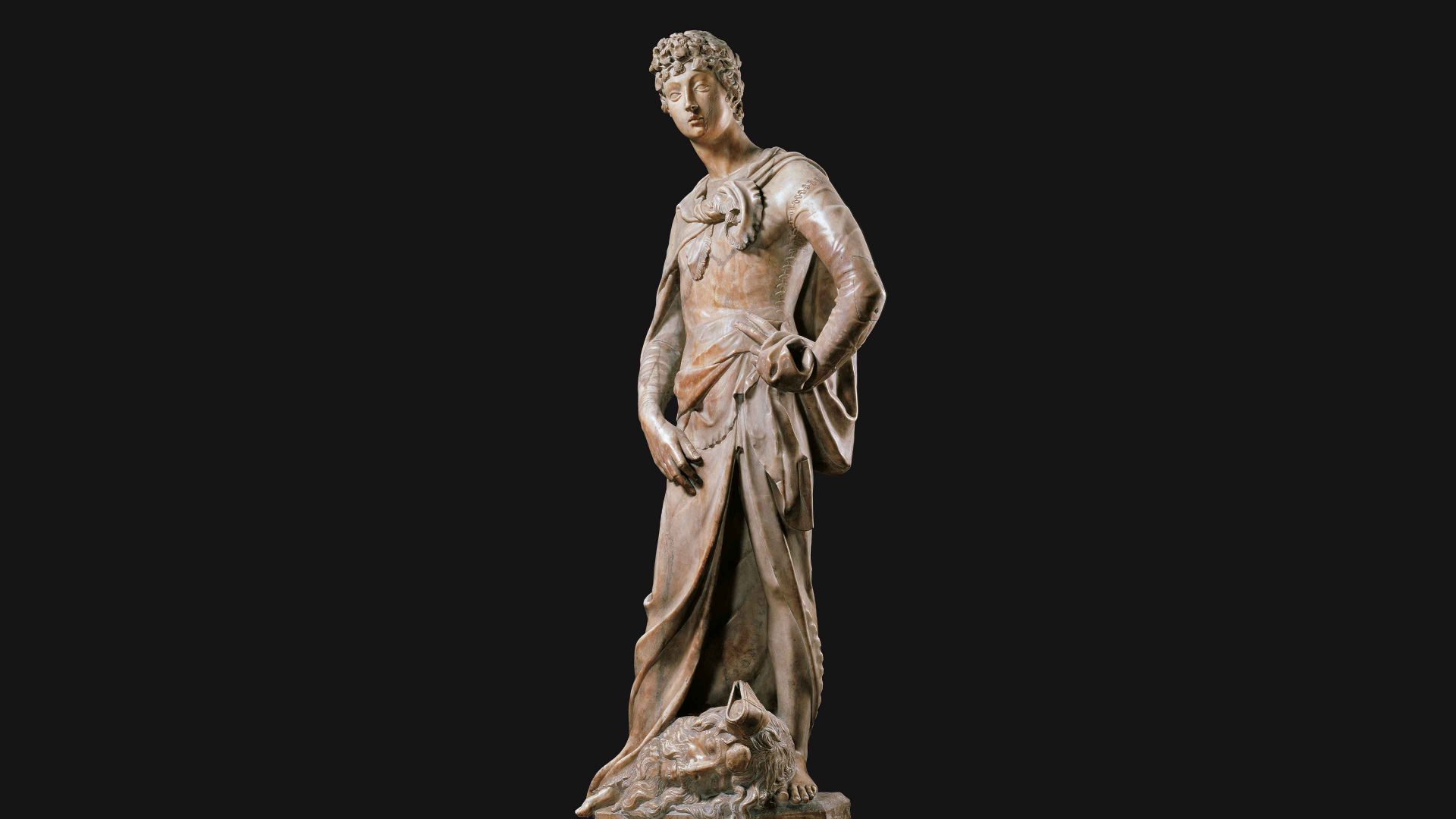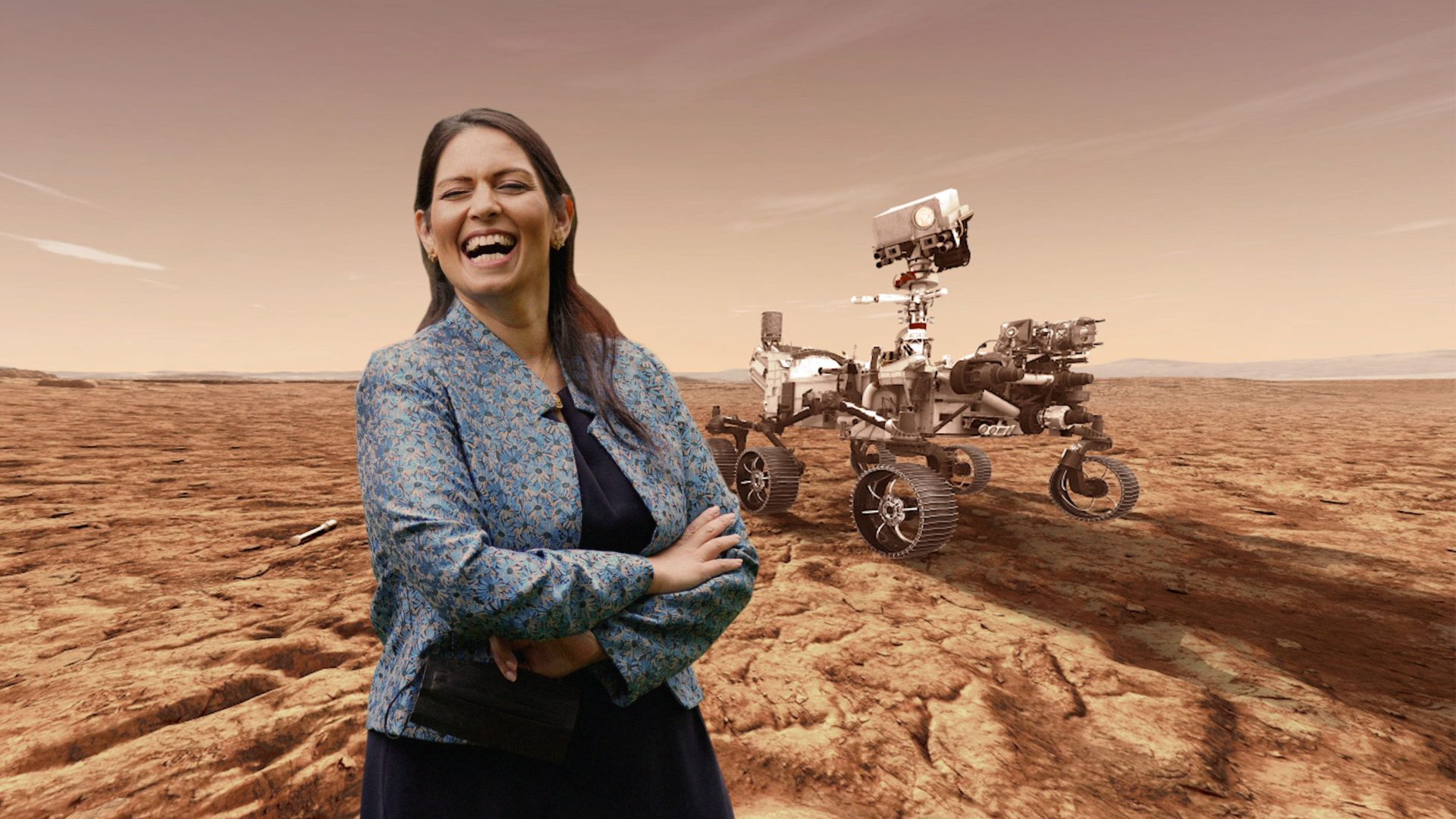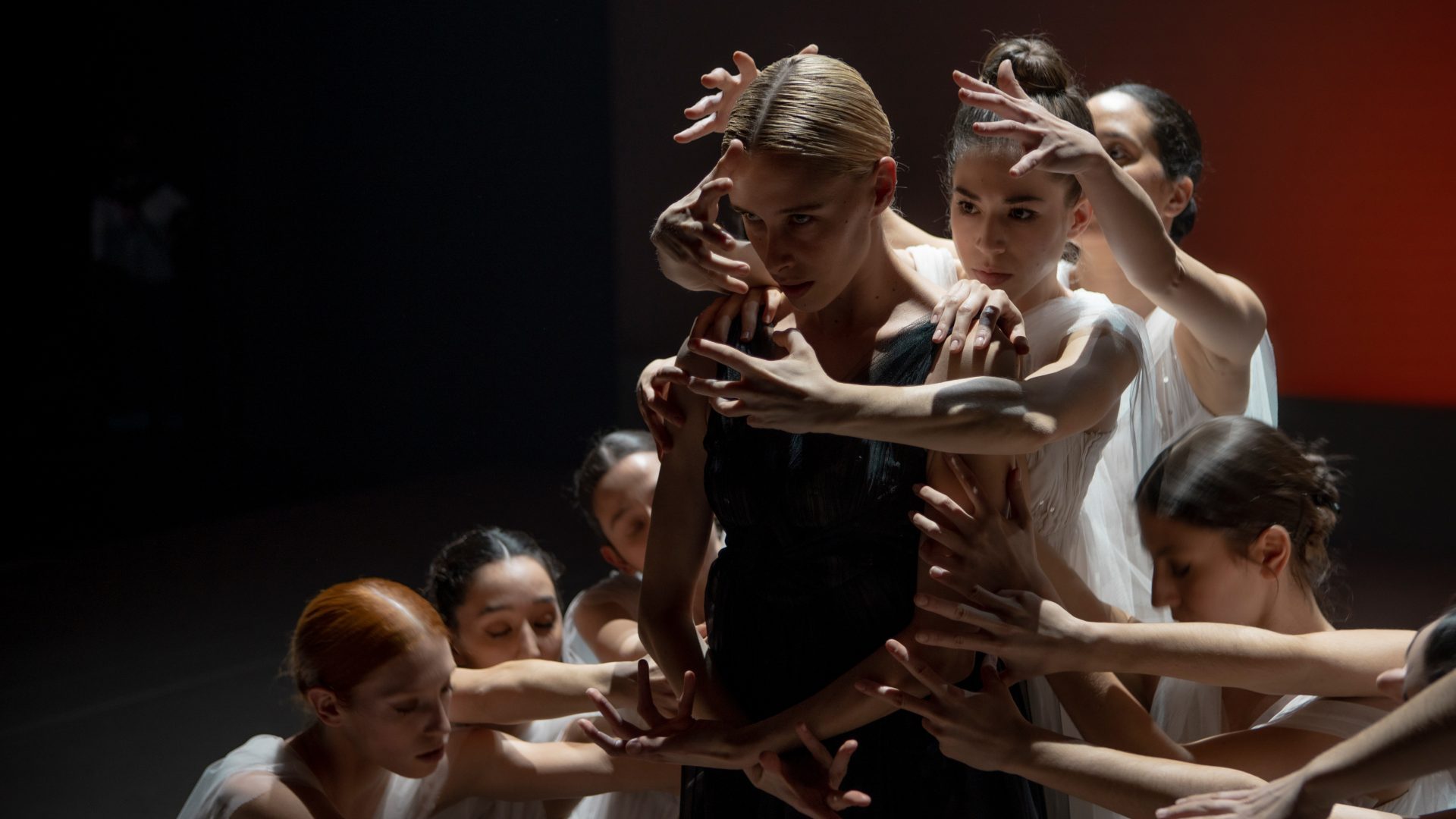There’s nothing quite like a Renaissance jape. According to the biographer and art critic Giorgio Vasari, the artists Donatello and Brunelleschi knew how to wind each other up. After labouring painfully on a wooden sculpture of Christ on the Cross in 1408, Brunelleschi dashed his friend’s pride claiming it looked like a “peasant on a crucifix” and not the Son of God. Smarting from the judgment, Donatello threw down the artistic gauntlet, challenging Brunelleschi to do better. A couple of years later Brunelleschi invited Donatello to lunch. Donatello arrived to find Brunelleschi’s own variation on the theme sitting in his studio and was so gobsmacked by its merit that he dropped the eggs and cheese he had brought for lunch.
It is these two wooden crucifixes of Christ that greet the visitor in the first room of the Palazzo Strozzi’s landmark exhibition Donatello: The Renaissance, as if a direct quote from the distant godfather of art history Vasari himself. Donatello’s version is a barrel-chested labourer, all burnished muscles and swarthy realism; Brunelleschi’s a slender, pale and rarefied aesthete by comparison. But the images of God on the cross fade into the background of the tastefully coloured Smythson blue of the gallery walls, in contrast with the marble figure standing in the centre of the room, posturing with all the haughty froideur of a smug sixth-form prefect. It is David, the Old Testament shepherd boy who despite his youth and diminutive stature managed to dispatch the giant Goliath in hand-to-hand combat.
Originally intended to top one of the buttresses of Florence’s cathedral, Donatello’s David Victorious (1408) was moved to a more visible position in the central government chamber of the Palazzo della Signoria in 1416 as the Old Testament hero became an enduring political and patriotic symbol of a Florentine republic that feared no one and packed a mighty punch fending off more powerful aggressors (a prescient parable for Europe today).
The tone for this once-in-a-lifetime blockbuster of a show is thus set in the opening room, with a focus on both the traditional lineage of 600 years of art history, and a patriotic celebration of Florence and one of its homegrown
artists, to whom the city is finally devoting a definitive, exhaustive exhibition. Even the title of the show itself equates Donatello with what
continues to be perceived as the most prestigious period of cultural production – the Italian Renaissance, with Florence long considered to be the cradle of a new dawn in cultural and intellectual production across the
14th and 15th centuries. Spread over the Palazzo Strozzi and the Museo del
Bargello, the exhibition has one driving thesis: all roads in Renaissance art history lead back to Donatello.
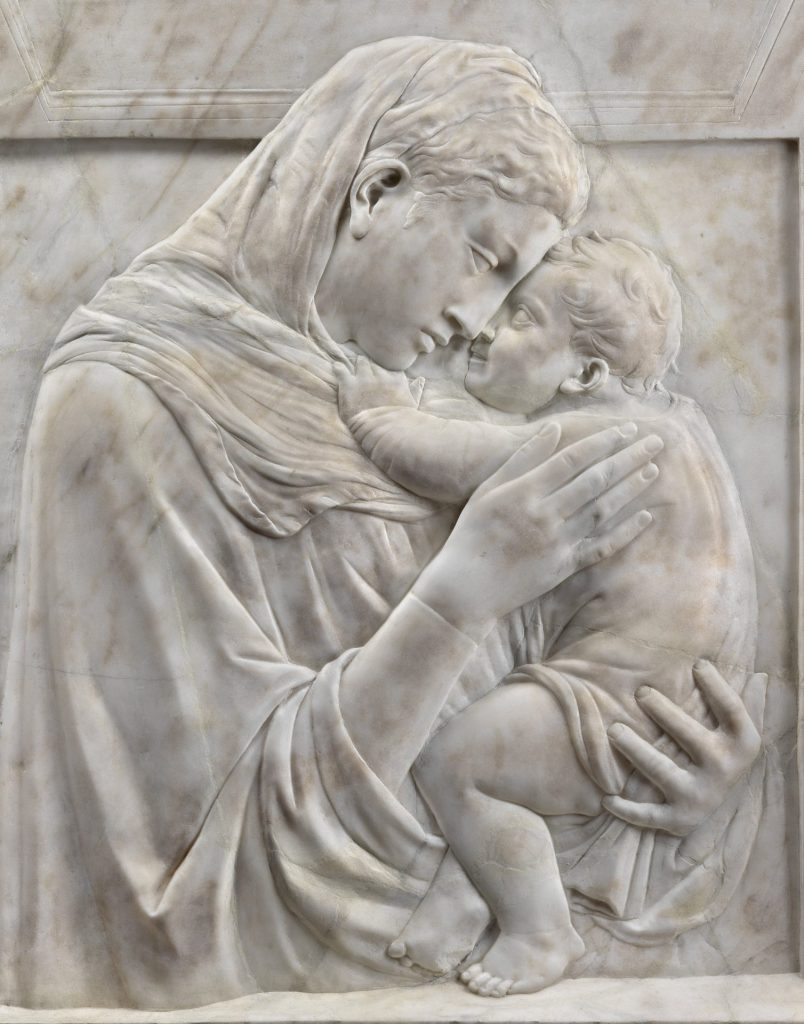
With works from over 50 of the world’s leading international museums, it’s also as much an exercise in international relations in culture and heritage as in art historical scholarship, and marks something of a traditionalist detour from Palazzo Strozzi’s recent programming, which has hosted (among others) exhibitions devoted to contemporary artists Marina Abramović and Jeff Koons. This is an unapologetically academic show of the type of rigour not often seen in contemporary exhibition curation: 130 works painstakingly
arranged in the grand manner of art history describe an evolution of Donatello’s artistic style and chart a sleuth’s trail through the various quotations of the grand master’s masterpieces in works by other artists of his generation. (Time will tell how the Staatliche Museen and Gemäldegalerie Berlin and the V&A in London will interpret the exhibition for when the show makes its institutional tour later in the year.)
It’s a rigorousness that also brings some of the over-familiar objects of the “grand tour” art trail into sharper focus: for example, the adjustment of the height of a column on which Donatello’s bronze sculpture of David stands on permanent display in the Bargello transforms the work from an effeminate shepherd boy with bashfully camp gaze to a slender hero whose downcast glare incites courage and resistance in the Florentine public.
There are no bells, whistles, AR headsets, integrated app experiences or interpretative videos of talking heads, the only concession to the contemporary manners of museum interpretation is the TikTok channel. But Donatello doesn’t need it anyway, his brilliance is inevitable, most of all the way in which he transformed the art of sculpture in the 15th century, breathing it through with a palpable sense of life bristling within cold inanimate matter.
The Pazzi Madonna of 1422 (a heart-stabbing highlight of the show) sees a
mother with the linear profile of an antique Roman matron locked in an
intimate dyad of absorption with her infant Jesus. Sculpted in relief in marble, it belies all the chilliness of the material. Drawing on the new
understanding of perspectival space pioneered by his contemporaries such
as Brunelleschi, mother and child are framed in something of a perspectival receding portal that crystallises the tender display of emotion into something infinite and monumental.
Elsewhere, the gilded bronze panel from the baptismal font in Siena Cathedral depicting the Feast of Herod is almost cinematic in the way in which it plays with continuous narrative within the pictorial space, the decapitated head of John the Baptist making its way on a charger plate in a gory procession through convincingly three-dimensional architecture from the back left of the image to the foreground as sculpted onlookers gasp and register horror.
The curator Francesco Caglioti argues for Donatello’s status as a pioneer, “an earthquake” of new invention and possibilities in sculpture, from his recovery of terracotta as a medium (lost since classical antiquity) to his realisation of the first free-standing bronze nude figure since the classical age in his sensual bronze sculpture of David.
As exhibitions go, it is faultless and deserving of the wave of rapturous reviews; the catalogue a definitive work that will facilitate decades of future scholarship. But if anything, the exhibition is too certain of tradition, pinning Donatello down into a lineage rather than letting the work breathe, allowing us to find new resonances with images and experiences today.
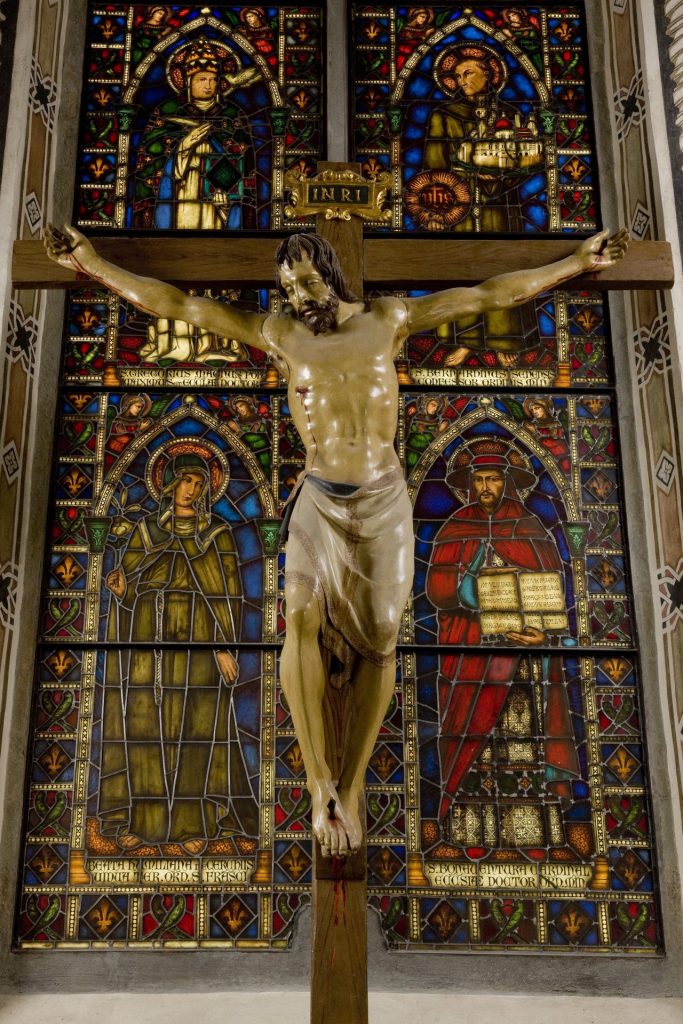
Tatge)
Born in Florence in 1386, Donatello straddles the 14th and 15th centuries, an age that emerged out of a devastating plague in Europe and which was shaped by the burgeoning of new technologies and access to information made possible by the printing press, and not unlike our own digital, post-Covid age.
Donatello’s influence on subsequent artists as a defining line of inquiry also
has its limits: the show ends with the only work by a woman, Artemisia
Gentileschi’s Virgin and Child from 1610- 15 in an attempt to “prove” how far into the future of Italian art Donatello’s experiments can be perceived.
This argument relies on the fact that a copy of Donatello’s Dudley Madonna was in Rome in the church of Santa Maria in Vallicella at the same time as
Artemisia. But was she so in thrall to a copy of Donatello’s domestic depiction of mother and child from a century and a half earlier that she couldn’t help but quote it, or was it her own personal experience as a mother and artist that informed the work?
Donatello: The Renaissance is one among a crop of Renaissance exhibitions this spring. Birmingham’s Ikon Gallery has Shadows on the Sky, the first UK exhibition devoted to the Italian artist Carlo Crivelli. Born in Venice in 1430, the artist was jailed for adultery and produced works that play with optical illusion (trompe l’oeil) and the possibility of multiple realities within the one image. Cast aside by biographers such as Vasari, Crivelli has always been something of an outsider to the grand narrative of Renaissance art. Ikon Gallery’s exhibition upends all the weighted conventions of the blockbuster monographic Renaissance show to flirt with chaos and even wit (and without the naive comedy found in Vasari’s tales of broken eggs.)
Here we have a type of show only made possible due to exceptional funding to the tune of £150,000 from the inaugural Ampersand Foundation award given to the Ikon Gallery’s director, Jonathan Watkins, in 2019 to realise the exhibition of his dreams. What results in an altogether more supple, self-reflective show, (co-curated with Amanda Hilliam) that explores Crivelli’s art of illusion and trompe l’oeil, which have been likened to Magritte’s experiments in painting and perception (“ceci n’est pas une pipe” – correct, it’s a picture of a pipe). Previously covered in The New European has been the National Gallery’s Raphael, another monographic show that also positions the artist as a singular genius who “shaped western culture like few artists before or since”, and like the Donatello show it also boasts a bevy of international prestigious loans.
Why the Renaissance now? It may be a question of timing – Raphael was due to open in 2020 on the 500th anniversary of the artist’s death – but as our digital futures unfurl at speed, could this appetite for the old masters reflect a hankering for the lofty classics of an earlier era? Or is it because there has always been an attachment to the Renaissance period as a time of unfettered objectivity and rational clarity that illuminated the so-called darkness of the barbaric middle ages that preceded it; a clarity of vision in its paintings, a meaning behind every pictorial symbol that puts an end to any head splitting
ambiguity or uncertainty characteristic of our post-truth, fake-news infected world?
Or perhaps it’s that for many art historians, curators and art lovers, Renaissance art has been a safe haven, solid ground on which to gaze at historical objects with the comfort of a distant gaze, as yet largely untroubled by histories of colonialism and globalisation.
Donatello: The Renaissance, Palazzo Strozzi and Museo del Bargello, Florence, to July 31, 2022
Carlo Crivelli, Shadows on the Sky, Ikon Gallery, Birmingham, to May 29 2022
Catherine McCormack writes and lectures on art. She is the author of Women in the Picture: Women, Art and the Power of Looking, and teaches art history at Sotheby’s Institute and the University of Oxford

